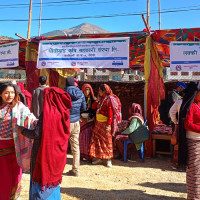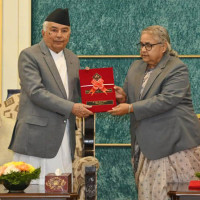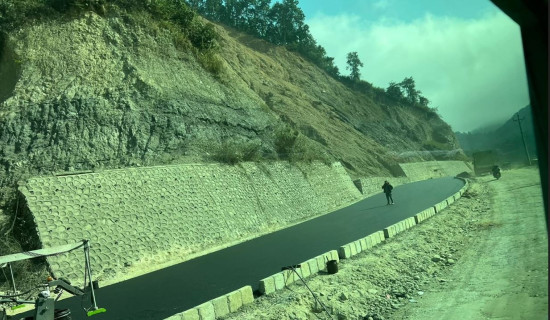- Monday, 15 December 2025
South Asia’s Identity Crisis
South Asia witnesses a significant shift in the strategies spearheaded by different countries. Its traditional map construction as a regional grouping could shrink in the not-so-distant future if the current trend were to continue. The geopolitical dynamics are undergoing a visible change. The world’s most populous region, also hosting the single-largest concentration of poverty-stricken people, the South Asian Association for Regional Cooperation (SAARC) risks losing its effective use. It might be reduced to an abstract with no official strength for any notable geographical platform for its eight member states.
If activated as a brainstorming forum for airing collective voice and commitment, SAARC would lend an air and aura of strength, showcasing organisational collaboration. Never since it was launched in the Bangladeshi capital of Dhaka in December 1985 has the world’s most populous region, representing every fifth of humanity, been in the grip of doubts and distancing now affecting the people of its member nations. Not that there were no earlier clashes of minds and armed outbursts or even outright wars but they were largely between no more than two nations.
The frequency of flare-ups over bilateral issues and international cooperation, together with serious departures in terms of security alliances with new partners and trade ties, is starkly different in the 2020s than at any time previously. That echoes no good omen, as it leaves the gates wide open for other, larger forces to play mischief. The April-May armed clashes between India and Pakistan over terrorist attacks in Kashmir were yet another pointer to the existing state of affairs in the region and its immediate neighbourhood.
State of hibernation
Almost dormant for a decade, SAARC’s leaders rarely mention the grouping in public, let alone call for activating it as the organisation was envisaged to be when it took off 40 years ago, generating great expectations among South Asian people and attracting considerable interest and speculation in the rest of the international community.
Bangladesh’s Chief Adviser Muhammad Yunus regrets that SAARC has been sidelined for more than a decade now. Last month, the Nobel Laureate said, “SAARC is not working because it doesn’t fit into the politics of one country.” Having organised the 18th SAARC summit in November 2014, Nepal has been eternally awaiting the opportunity to pass on the baton of SAARC chair to Pakistan but the Delhi-Islamabad differences over vexing, longstanding border disputes and alleged sponsoring of terrorist activities have resulted in bilateral hostility intensifying at grave levels.
New Delhi does not wish to sit at the same table with Islamabad. The consequent delay in another summit has enforced on Nepal the SAARC chair for so long. Ironically, the last Kathmandu summit’s theme was Deeper Integration for Peace and Prosperity. Bigger neighbours can contribute to ensuring that smaller neighbours’ sensitivities are fairly addressed to put to rest any sense of undue pressure. By the same yardstick, the legitimate interests of regional powers should not be ignored. This, however, does not embrace claims of “sphere of influence” that only betray hegemony and imperial designs carrying aggressive ambitions.
Meanwhile, new groupings emerged as undeclared options for multiple SAARC countries. The Bay of Bengal Initiative for Multisectoral Technical and Economic Cooperation (BIMSTEC), whose seven members include Bangladesh, Bhutan, India, Myanmar, Nepal, Sri Lanka and Thailand, accounts for 21 per cent of the world’s population. The BBIN (Bangladesh, Bhutan, India and Nepal) Initiative is another platform. However, BBIN and BIMSTEC, both headquartered in Dhaka, are yet to make any significant breakthrough. This is attributed to the missing spark in Dhaka-Delhi ties.
Other sharp diplomatic steps are also unfolding. China, Afghanistan and Pakistan have constituted a trilateral platform that focuses on trade and security. The trio’s foreign ministers, in their Kabul meeting in August, spoke against foreign interference in the region. The host, Prime Minister Mullah Mohammad Hassan Akhund, praised China as a “force for justice”. China’s Global Times dwelt upon how the trio can walk the path of “cooperative, common security”. South Asian analysts note how Bangladesh and Pakistan are engaged in “jaw-dropping military moves” after the tumultuous political change in Dhaka last year. Bangladesh has agreed to China’s proposal to revive an air base that the British built in the early 1930s, while Saudi Arabia and nuclear-armed Pakistan have signed a mutual defence pact, adding to their long partnership.
Future pointer
Under the new accord, Riyadh and Islamabad are committed to a binding clause that “any aggression against either country shall be considered an aggression against both”. It suggests that no independent sovereign state can afford “aggrandisement” without the principle of reciprocity in a firm place. Beijing had played a role in the recent restoration of Pakistan-Afghanistan’s diplomatic ties — something significant for Kabul, considering that many countries have abstained from extending full recognition to the Taliban government at the behest of the United States. The trilateral team members are geared toward rejecting an exclusive military partnership with any other country.
Plagued by armed conflicts provoked by foreign forces or domestic causes since the late 1970s, millions of Afghans poured as refugees into neighbouring Pakistan and Iran. At one time, one-third of Afghanistan’s total population flooded the two neighbouring countries as refugees.
In an open initiative, Yunus has expressed Bangladesh’s interest in joining the Association of South East Asian Nations (ASEAN), stating that integration with the grouping’s economies could significantly accelerate its development. Were Bangladesh to secure ASEAN entrance, SAARC would experience a jolt of sorts. But this is unlikely to happen any time soon, if at all.
About the same time in late September, the US President Donald Trump hosted and praised Pakistan’s Prime Minister Shahbaz Sharif and Field Marshal Asim Munir at the White House. Trump described Sharif as a “great leader” and Munir as a “great guy”. Given that current bilateral relations with most of its neighbours have been the least heady since its independence in 1947, India needs a candid review of its diplomacy and external affairs policy. Something effective is in order to stem the risk of gradual regional isolation and South Asia’s working identity getting dimmer.
(Professor Kharel specialises in political communication.)














